- 6 Hot And In-Demand Tech Areas In 2024
- How To Forward Your Career With Cloud Skills?
- Top 7 On-Demand IT Certifications
- Most In-demand Technologies To Upskill Your Career
- Top 10 Hottest Tech Skills to Master in 2024
- Top Skills You Need to Become a Data Scientist
- Groovy Interview Questions
- Facets Interview Questions
- Crystal Reports Tutorial
- VAPT Interview Questions
- Flutter Tutorial
- Saviynt VS Sailpoint
- Flutter vs Xamarin
- PingFederate Interview Questions and Answers
- Dart vs Javascript : What's the Difference?
- Terraform Private Registry
- Cylance Interview Questions and Answers
- Sophos Interview Questions and Answers
- Top Camunda Interview Questions
- NUnit Interview Questions and Answers
- Impala Interview Questions and Answers
- ETL Tutorial
- Ionic Interview Questions
- Grafana Tutorial
- What is VAPT? - A Complete Beginners Tutorial
- SnapLogic Interview Questions
- Saviynt Interview Questions
- What is PingFederate? - A Complete Beginners Tutorial
- SnapLogic Tutorial
- Grafana Interview Questions
- RHCE Interview Questions and Answers
- Web Services Interview Questions
- Domo Interview Questions and Answers
- Terraform Interview Questions
- What is Sophos? | Sophos Turorial for Beginners
- Top Servlet Interview Question And Answers
- NLP Interview Questions and Answers
- Microsoft Intune Interview Questions
- Top XML Interview Questions And Answers
- Tosca Commander
- Katalon vs Cypress
- SQLite Tutorial
- Tosca Tutorial - A Complete Guide for Beginners
- Xamarin Interview Questions and Answers
- UiPath vs Automation Anywhere - The Key Differences
- OpenShift Interview Questions
- What is Katalon Studio - Complete Tutorial Guide
- Kronos Interview Questions
- Tosca Framework
- Burp Suite Tutorial
- Mendix Interview Questions
- Power Platform Interview Questions
- Burp Suite Interview Questions
- What is Mendix
- What is Terraform ?
- Burp Suite Alternatives
- Dart vs Kotlin
- What is Kronos?
- ES6 Interview Questions
- Entity Framework Interview Questions
- COBOL Interview Questions
- Express JS Interview Questions
- OSPF Interview Questions
- LINQ Tutorial
- CSS3 Interview Questions and Answers
- Auth0 Tutorial
- MS Access Interview Questions
- What is SPARQL - A Complete Tutorial Guide
- ExpressJS Tutorial
- UML Tutorial
- HTML vs XML
- Cypress vs Jest
- Impacts of Social Media
- OWASP Interview Questions
- OpenShift vs Docker
- ES6 Tutorial
- Spark SQL Interview Questions
- Spark SQL Tutorial
- What is OWASP?
- AppDynamics Interview Questions
- Dynatrace Interview Questions
- Rest Assured Tutorial
- New Relic Interview Questions
- REST API Tutorial
- Datadog Interview Questions
- Rest API Interview Questions
- Rest Assured Interview Questions
- PTC Windchill Interview Questions
- Easiest Tech Skills To Learn
- Python SQLite Tutorial - How to Install SQLite
- Datadog Tutorial - Datadog Incident Management
- What is AppDynamics - AppDynamics Architecture
- RabbitMQ Interview Questions And Answers
- What is Dynatrace
- Datadog Vs Splunk
- Web Developer Job Description
- JP Morgan Interview Questions
- Types of Corporate Training
- Benefits of Corporate Training
- What is Corporate Restructuring?
- Blended Learning in Corporate Training
- What is Corporate Level Strategy?
- Flutter Projects and Use Cases
- How to Become a Web Developer
- How To Install Keras?
- How to Install Flutter on Windows?
- How to Install Cypress on Windows?
- How to Become a Computer Scientist?
- How to Install Katalon Studio in Windows
- How to Become a Programmer
- OWASP Projects and Use Cases
- How to Install Sophos?
- Workato Tutorial
- Workato Tutorial - What is Workato?
It has become quite essential for organizations to find and assess vulnerabilities in their system. The system's security has become a big deal in modern application development. Business logic has become more complicated than ever, and many web applications are incorporating new things. In such a scenario, incorporating security testing has become quite important.
Security testing is a procedure where testing is done to find any weaknesses in the security mechanism that protects the data and keeps functionality as intended. The main components of security are authentication, authorisation, availability, confidentiality, integrity, and non-repudiation.
Important information related to security testing:
- In security scanning the need for vulnerability scanning helps in identifying the loopholes in the system. The use of vulnerability management software helps to identify and omit those security risks.
- Security testing also deals with resolving misconfigurations in the software, network, and systems. Both manual and automated tools are available for in-depth analysis and fixing the issue.
- There is an additional security measure known as penetration testing that helps in stimulating a real-time cyber attack on the software. It helps to detect the system capability to handle bot attacks.
- Ethical hacking is also a part of security testing. It helps in saving all the misconfigurations and vulnerabilities in a software.

With 15 questions each for freshers, experienced and 10 FAQs we’ve got a whole package to make you interview-ready! Keep reading to learn more!
Top 10 Security Testing Interview Questions
- How does security testing work?
- Define SQL injection.
- Define Adhoc Testing.
- Describe SSL. List the parts of it.
- What exactly is NIDS?
- Define port scanning.
- Name the three security testing techniques.
- Tell us a few of the goals of backend testing.
- Define file enumeration.
- Describe HIDS.
Security Testing Interview Questions For Freshers
1. "Vulnerability" - What is it?
Any system that is weak enough to be attacked by outsiders or bugs is said to be vulnerable.
The likelihood of vulnerabilities increases if the system has not undergone rigorous security testing. Patches or fixes are needed periodically to shield a system from vulnerabilities.
2. How does security testing work?
The method of security testing involves running test cases to find flaws in the information systems' security mechanisms. Testers play the part of attackers and manipulate the system to uncover flaws in the security procedures. The purpose of security testing is to identify any application or system's vulnerability and secure its data from intruders.
| Looking forward to become a master in Cyber Security and SIEM Courses? Check out the "Penetration Testing Training" and get certified today. |
3. Intrusion Detection: What is it?
A technique called intrusion detection assists in identifying potential threats and responding to them. In order to identify intrusions, information must be gathered from numerous sources and systems, analyzed, and potential attack vectors must be identified.
The following are checked during intrusion detection:
- Analysis of various data collections, etc.
- Any unusual behaviour
- Data auditing for the system
- Potential attacks

4. How does loop testing operate, and what is it?
Software testing, known as "Loop Testing", focuses solely on ensuring that loop structures are correct. It belongs to the Control Structure Testing (path testing, validation testing of data, condition testing).
Loop testing is white box testing. The loops in the program are tested using this technique.
5. Define SQL injection.
When using code injection to target data-driven systems, SQL injection inserts malicious SQL statements into the entry field for execution. It is primarily identified as a website attack vector, although it may also be used to attack any kind of SQL database. Attackers can become administrators of the database server, spoof identities, alter already-existing data, cause repudiation problems like cancelling transactions or changing balances, allow full disclosure of all data on the system, destroy data or otherwise make it unavailable, and cause repudiation issues.

6. Define Adhoc Testing.
Adhoc testing is commonly used to break the system intentionally. The most notable feature of Adhoc testing is the absence of any test design methodology for producing test cases.
The method is typically applied to find software bugs. Adhoc testing is frequently performed without documentation because it lacks test cases.
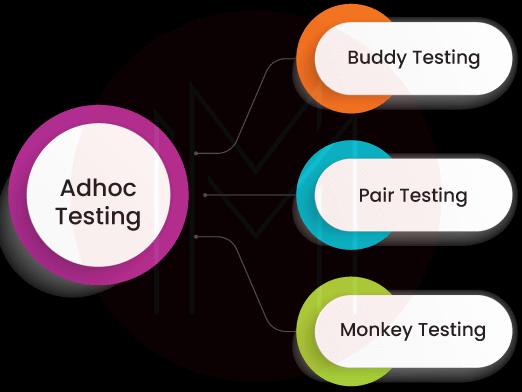
7. What are cookies, and what varieties are there?
A cookie is a little piece of data that a web browser stores after receiving it from a web server and can access at any time in the future. Cookies include password-based data, auto-fill data, etc.
Session cookies and persistent cookies are the two sorts of cookies.
Session cookies are transient and only exist for the duration of the current session.
Persistent cookies are the ones that are kept on a hard drive and remain there until they expire or are manually deleted.
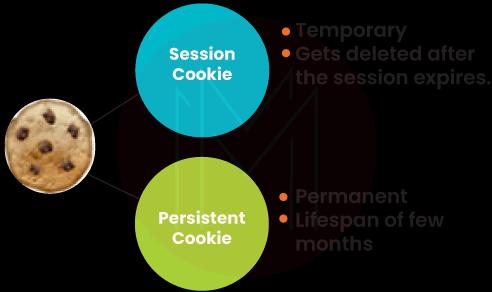
8. Can you list us the attributes of Security Testing?
The following are the 7 characteristics of security testing:
- Resilience
- Non-repudiation
- Integrity
- Confidentiality
- Availability
- Authorization
- Authentication
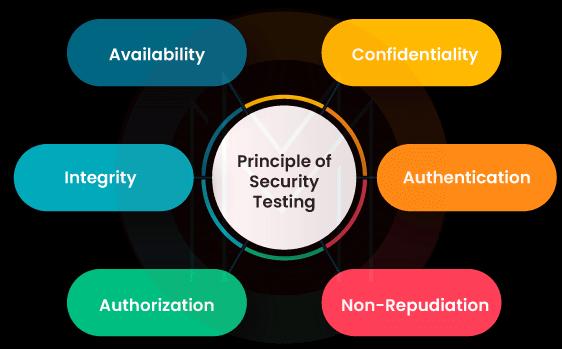
9. Describe SSL. List the parts of it.
Secure Socket Layer is referred to as SSL. It's employed to establish a safe connection between the client and the server. The components of SSL are the change cypher specification, encryption algorithms, handshake protocols, and SSL recorded protocol.
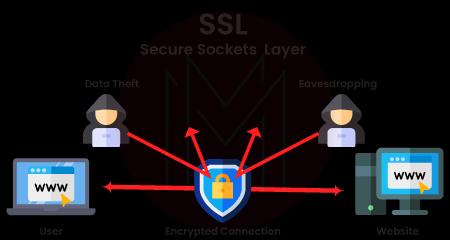
10. What's the prime difference between Structured Testing and Unstructured Testing?
Structured Testing: In this approach, each step of the testing process, from the creation of test cases to the subsequent sequential execution, is documented. The testers do tests according to this script.
Unstructured testing: In this method, test cases are created as they go along by the testers, who often do testing by guessing incorrectly.
| Related Blog: "Types of Software Testing" |
11. Why is sandwich testing required while testing software?
Project failure might result from poor methodology. Each software has a unique approach, and each methodology has its own traits. Sandwich or hybrid testing combines various technologies to ensure that all necessary testing procedures are covered to the fullest extent possible.
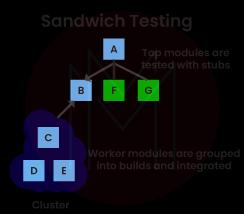
12. What are the two popular methods for safeguarding a password file?
Hashed passwords and salt values, or password file access control, are two popular methods for securing a password file.
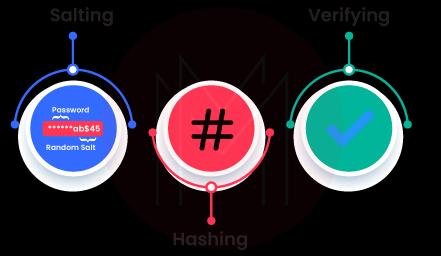
13. What exactly is NIDS?
The term "NIDS" stands for "Network Intrusion Detection System," which is used to examine all of the subset's passing traffic and compare it to known threats. If a flaw is found, the system immediately notifies the administration with an alert message. It can also cooperate with other systems, such as firewalls to provide greater defence against known attack vectors. It can include both tiny and large computers.
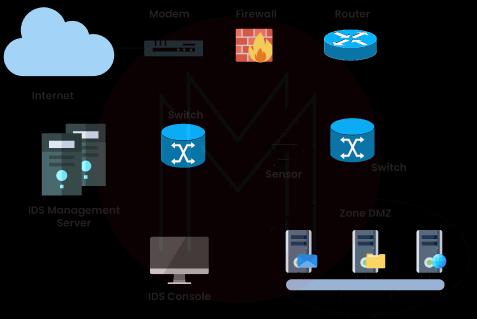
14. Define the system testing in software testing.
The entire system must be tested as part of system testing. To determine whether the system operates according to plan, all of the modules and components are connected. System testing is done after integration testing. For the creation of high-quality products, this is essential.
15. Describe ISO 17799.
Best practices for Information Security Management are outlined in ISO/IEC 17799, which was first published in the UK. It contains information security rules for all enterprises, no matter how big or little.

Security Testing Interview Questions For Experienced
16. Define port scanning.
Any system's ports are the points at which data enters and exits. Port scanning is the process of inspecting ports for vulnerabilities in the system. The system may have certain weak spots where hackers might enter and steal crucial data. It is important to recognize these areas and guard against their abuse.
The types of port scans are:
- Fragmented packets: The scanner sends packet fragments that pass through the firewall's basic packet filters.
- FTP bounce: To conceal the origins of the scan, the scanner passes through an FTP server.
- Stealth scan: The scanner prevents the computer being scanned from recording the port scan operations.
- Strobe: Checking for existing services.
- Sweep: On many computers, the scanner is connected to the same port.
- UDP: Checking for active UDP ports
- Vanilla: The scanner tries to connect to each of the 65,535 ports throughout this scanning.
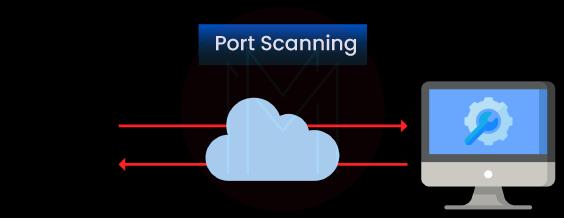
17. Tell us about some of the limitations of Soak Testing.
Like any performance test, soak testing has its share of difficulties:
- The process that takes a lot of time – Soak testing requires a large amount of time to be available. It's not some test that can be completed in a short period of time. Most of the time, it can take up to a day.
- Requires both tools and expertise – Both technical expertise and automation tools are required for executing a good soak test; thus, both are necessary. Both time and data are used up significantly by the test. Additionally, you also require the technical and analytical abilities of testing professionals.
- Choosing the right test volume – It might be challenging to choose the right test volume. Throughout the test, previous test cases and scenarios are taken into account. Here is where a knowledgeable tester team can be of great assistance.
- Risky – Testers need to separate the test environment from the active production environment. Any flaws found during the test could result in data loss or corruption that is irreversible.
18. What does system testing provide as a means?
It's crucial to finish the entire test cycle, and ST is where this is done.
- System testing is done in a context that is similar to production, giving stakeholders a clear image of how users will react.
- It lessens the volume of support and troubleshooting calls made after deployment.
- The Business Requirements and the Application Architecture are both tested at this stage of the STLC.
- In order to give the user a high-quality product, system testing is essential.
| Also CheckOut: "Software Testing Life Cycle(STLC)" |
19. What makes module testing a crucial part of software testing?
These are the reasons why testers like module testing:
Time consumption is less: It is preferable to break the application up into smaller pieces, such as subprograms or small code units, because doing so will take less time. Developers can construct unit test cases and delegate them to several testers rather than handling everything themselves.
Supports parallel testing: It enables independent testing of various modules from a single application. Modules are reduced in size so that testers may focus more on them, producing a better final output.
Reduces Complexity: Testing an entire application at once can be difficult and time-consuming. The complexity of testing an application as a whole can be reduced by segmenting a large application into manageable pieces or unit levels.
20. Name the three security testing techniques.
Security testing approaches include white-box testing, black-box testing, and grey-box testing.
- White Box Testing: Under this type of testing, all the data is made available to the testers.
- Black Box Testing: Using this technique, the system can be tested in a real-time setting without the tester providing any information.
- Grey Box Testing: White box testing and black box testing are combined in one technique, known as grey box testing. The tester receives only a portion of the information; the rest is tested independently.

21. List us the benefits of Pilot Testing.
Pilot testing has numerous benefits, some of which are listed below:
- This testing helps to ascertain the genuine demand for the product because it is conducted from the viewpoint of the user.
- It helps with error/bug detection before to manufacture, resulting in an excellent product with fewer expensive errors.
- It helps make the software or product more appealing to end customers.
- The software rollout proceeds more swiftly and smoothly as a result.
- It helps in estimating the likelihood that a product will succeed.
- It helps to produce the best possible product.
22. What do you understand by “URL manipulation”?
Hackers can use URL manipulation, a sort of attack, to change the URL of a website in order to access vital data. Between the client and server, the data is transmitted using the HTTP GET method as arguments in the query string. Hackers have the ability to change the values between these settings, get server authentication, and steal sensitive information.
It is important to perform security testing on URL manipulation to prevent this kind of attack. Testers themselves can attempt to change the URL in order to look for potential attacks and, if any are discovered, to stop them.
23. In endurance testing, what are we testing?
In endurance testing, the following items are examined:
- Test for memory leaks: The software or application is examined to see if there are any memory leaks that could cause the system or operating system to crash.
Test the closure of the connections between the system's layers: If these connections are not closed, the system may crash. - Closing the test database connection: Additionally, the system may crash if the test database connection is not shut down.
- Test response time: Test the system's response speed because it could become sluggish after extended use. Testing the application's or software's response time becomes crucial as a result.

24. Tell us a few of the goals of backend testing.
Accuracy of business rules: Complex components like relational limitations, triggers, stored procedures, etc., are brought on by complicated databases. Thus, to authenticate these complicated items, testers use the proper SQL queries.
ACID properties of transactions: Each transaction that the database processes must adhere to the four ACID criteria of atomicity, consistency, isolation, and durability.
Data integrity: The screens and other forms must display the most recent and updated values of shared data. An older value cannot be displayed on one screen after the value has been updated on another. They have to be updated concurrently.
Data mapping: To check whether the fields in the database table are appropriately and consistently mapped to the UI or frontend forms.
25. List the seven primary security testing categories according to the Open Source Security Testing methodology guide.
According to the Open Source Security Testing methodology document, there are seven primary categories of security testing:
- Vulnerability Scanning: Automated software checks a system for known flaws during vulnerability scanning.
- Security Scanning: Network and system vulnerabilities can be found using security scanning, a manual or automated process.
- Penetration testing: Security testing that helps to identify flaws in a system is known as penetration testing.
- Risk Assessment: It is the process of analyzing potential dangers in a system. There are three levels of risk in the order of– Low, Medium, and High.
- Security Auditing: A thorough examination of systems and applications to find flaws.
- Ethical hacking: Hacking for purposes other than obtaining personal gain is known as ethical hacking.
- Posture Assessment: An organization's total security posture is shown by a posture assessment, which incorporates security scanning, ethical hacking, and risk assessments.
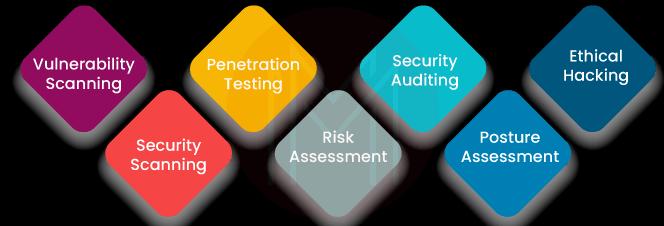
26. What problems are found by soak testing?
A soak test evaluates a system's and piece of software's effectiveness by seeing how it handles a lot of loads. Soak testing aids in the pre-detection of:
Database Connections Failure: It can be caused by incorrect database information, faulty databases, or unresponsive database servers. In other words, the system/device is unable to establish a connection with the database to retrieve the needed data. Databases and systems can occasionally crash due to high load. Soak testing is required to find these problems early on.
Memory leaks: Memory leaks can lower the system's total memory capacity, which lowers system performance. In the worst situation, it could cause the system or device to malfunction, crash a program, or make it run slowly. Developers can identify any potential memory leaks through soak testing, and then devise solutions.
Network Layer Connections Failure: The network layer facilitates the passage of network packets from source to destination through different networks. Bottlenecks can develop due to overloaded or underloaded servers, traffic congestion, improper router setups, and persistent frame loss, breaking network layer connections. Developers can identify these connection failures thanks to soaking layers and taking proactive action to fix the problems.
Response time degradation: Heavy loads can severely impact software/systems by lengthening their response times, which has a negative impact on user experience. Developers can identify response time degradation and address it as soon as possible by using soak testing.

27. Define file enumeration.
This style of attack combines a URL manipulation attack with forced browsing. Hackers can modify URL string parameters to access sensitive material, such as accomplished data, outdated data, or data that is still being developed, that is often not available to the general public.
28. Tell us about the Backend Testing Process.
The backend testing procedure is as follows:
- Setting up the test environment− This is the first step in performing backend testing and will ensure a high-quality testing procedure.
- Creating test scenarios– The test cases are created for carrying out the test after the test environment has been built.
- Execution − The test cases are actually run during this phase of the testing process, which is called execution.
- Analysis − Once all test cases have been run, the findings and method are analyzed to see if the testing process was carried out correctly or not.
- Log Defects − In the final stage, known as "log faults," the the testing team informs to the developing team of any defects found in the system's database. The term "report submitting" is sometimes used to describe this phase.

29. Describe HIDS.
Host Intrusion Detection System, also known as HIDS, is a system that takes a snapshot of the current system and compares it to the prior snapshot. If any crucial files have been altered or destroyed, a notification is generated and forwarded to the administrator.
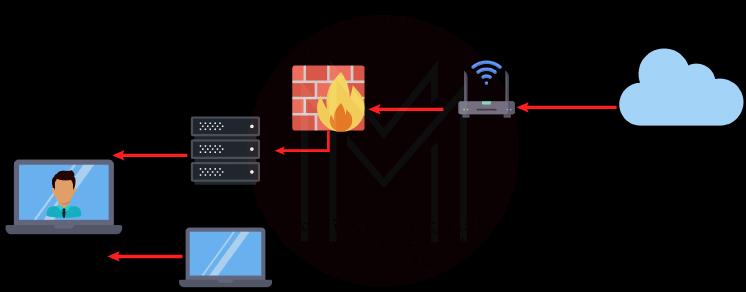
30. Brief us about the Test Metrics Life Cycle.
There are four stages in the life cycle of test metrics. They are:
- Analysis: During this phase, developers choose and specify the necessary metrics.
- Communicate: Once metrics are identified, developers must communicate to stakeholders and the testing team why they are important.
- Evaluation: It entails quantifying and confirming the information. The value of the metric must then be determined by testers using the data.
- Report: Following completion of the assessment process, the development team must produce a report with a thorough overview of the findings. The report is then given to the appropriate parties and stakeholders. The stakeholders attentively reviewed the information before providing their opinion.
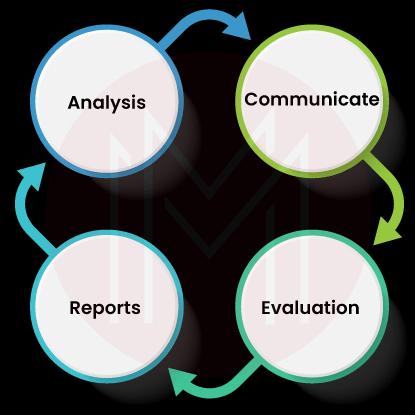
Frequently Asked Security Testing Interview Questions
1. What are the many methods of security testing?
The software testing that identifies system flaws and establishes whether the system's data and resources are secure from potential hackers is known as security testing. It makes sure that the software system and application remain secure and unaffected by any dangers or threats that could result in harm.
2. What are essential methods employed in security testing?
How to Perform Security Testing Manually:
- Brute-Force Attacks
- Check Server Access Controls
- Dynamic Analysis (Penetration Testing)
- Ingress/Egress/Entry Points
- Monitor Access Control Management
- Password Management
- Static Analysis (Static Code Analysis)
- Session Management
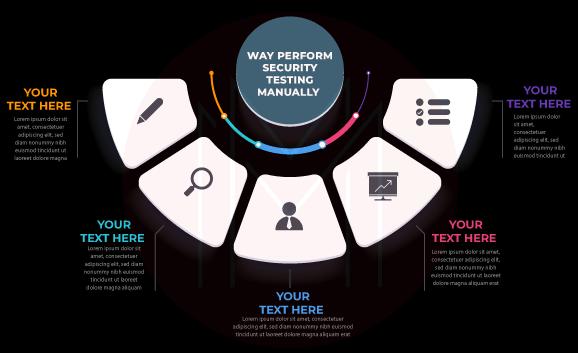
3. What instruments are employed in security testing?
Top 10 Open Source Security Testing Instruments:
- Iron Wasp.
- Nogotofail.
- SonarQube.
- SQLMap.
- W3af.
- Wapiti.
- Wfuzz.
- W3af.
- Zed Attack Proxy (ZAP)
4. Simply put, what is security testing?
An information system's security procedures are tested for flaws in order to protect data and keep functioning as intended.

5. Who is responsible for doing security testing?
Everyone involved in the lifecycle of software development, from the CEO to the development crew, is responsible for doing application security testing at different levels. Security initiatives need to get the support of Exec Manage.
6. Do non-functional security tests exist?
Non-functional testing includes security testing. Non-functional testing, in contrast to functional testing, primarily focuses on whether the software's features are operating as intended (i.e., "what" the software does) and examines how the application is configured and designed.

7. What does security testing cover?
Perhaps the objective is to evaluate the security of particular apps or systems. The aim is to make sure all systems that interact with the outside world are under control. Or it can be to make sure that every system is put through its paces so you can accurately assess your information risk.
8. What are the 3 classifications of security test evaluation?
Security assessments come in three types: "security audits," "vulnerability assessments," and "penetration tests." Despite the fact that these words are frequently used synonymously, these tests are in fact rather diverse.
9. Can security testing be automated?
The majority of security checks can be partially or fully automated during the course of a software product's lifespan. For example, integrating a static code analysis (SCA) tool right into the development environment can assist in automating problem discovery while code is being created.
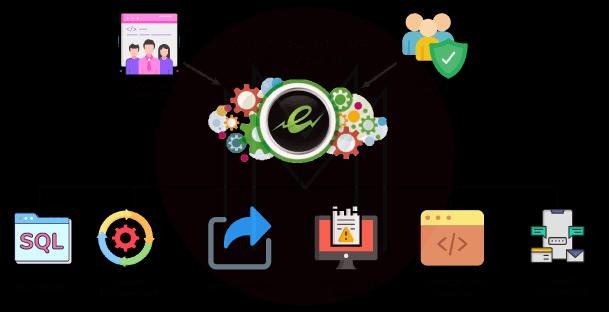
10. Why is security testing necessary?
The basic objective of security testing is to recognize system threats and evaluate their possible vulnerabilities so that they may be dealt with without the system becoming unusable or being exploited.
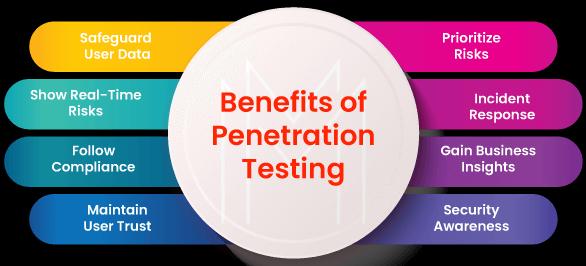
Conclusion
The most crucial kind of testing for any application is security testing. In this kind of testing, the tester assumes the position of an attacker and manipulates the system to discover faults that affect security. Understanding its core importance in software engineering, we all know the true value of a test engineer. This job is something which requires a deep understanding of the diverse range of security testing, vital data, and types of flaws that could be possible. We wish you the best in cracking your interview! We hope that this series has helped you get an idea of what the questions look like and how to answer them appropriately.
 On-Job Support Service
On-Job Support Service
Online Work Support for your on-job roles.

Our work-support plans provide precise options as per your project tasks. Whether you are a newbie or an experienced professional seeking assistance in completing project tasks, we are here with the following plans to meet your custom needs:
- Pay Per Hour
- Pay Per Week
- Monthly
| Name | Dates | |
|---|---|---|
| Penetration Testing Training | Jan 06 to Jan 21 | View Details |
| Penetration Testing Training | Jan 10 to Jan 25 | View Details |
| Penetration Testing Training | Jan 13 to Jan 28 | View Details |
| Penetration Testing Training | Jan 17 to Feb 01 | View Details |

















